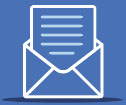Introduction
As a practice owner, you understand the value of a patient. For example, if an appointment is missed or rescheduled it can cause disruptions in your day-to-day operations and increase costs associated with lost productivity. You also know how much time and effort goes into scheduling appointments, so it makes sense that the last thing you want is for patients to miss them. For this reason, many medical practices are turning to remote patient monitoring as a way to track patient health and preventative care while ensuring they remain engaged in treatment plans at home.
Enhance patient engagement.
Remote patient monitoring is a great way to engage with patients. Today, patients want to be more involved in their care than ever before. Patients are becoming more knowledgeable about their own health and how best to manage it. Remote patient monitoring empowers them with the ability to monitor their health at home, on their terms—and that’s something that many patients appreciate. It’s also something that many physicians appreciate because it enables them to focus more time on treating acute cases while leaving routine visits for less urgent issues until later in the day (or week).
To enhance patient engagement through remote monitoring tools, here are some ideas:
Allow patients access to their test results online so they can easily check for abnormal results without having to wait for a physician's appointment or return visit from a nurse practitioner (NP). This will give them peace of mind as well as an opportunity for early intervention if needed. Give them access via text message or email when blood sugar, blood pressure levels or other physiologic data fall below or rise above certain thresholds. This way they don’t have worry about missing an alert notification because they forgot where they put down their phone. Provide educational materials regarding healthy lifestyle choices through an app feature such as “health tips of the day."
Improve patient outcomes with preventative care.
You may be wondering how remote patient monitoring can help improve your patients' outcomes.
Well, it's simple: by using remote patient monitoring tools, you can help your patients stay on track with their care and get the care they need. Remote monitoring allows you to easily track patient progress and remotely monitor clinical data like heart rate, blood pressure and weight so that you can see how well they are doing in real time. This means that if a patient has missed an appointment or needs an extra checkup because of something out of the ordinary (like a high fever or low blood sugar), you'll be able to respond immediately rather than waiting for them to come into the office.
Revenue Enhancement.
Gaining revenue is an important part of running a business. There are many ways you can improve revenue, but none so effective as the use of remote patient monitoring.
Remote Patient Monitoring (RPM) is about more than just tracking blood pressure or heart rate. It provides physicians with all kinds of information about their patients and can be used to reach out to them when they need it most, resulting in improved patient outcomes, engagement, experience, and loyalty.
Generate actionable data with remote monitoring tools.
Remote monitoring tools can provide data on a patient’s health.
Data can be used to improve patient outcomes.
Data can be used to improve patient engagement.
Data can be used to improve patient experience.
Data can be used to improve practice revenue.
Data can be used to improve practice efficiency
Leverage technology to simplify your remote patient monitoring process.
Leverage technology to simplify your remote patient monitoring process.
Use technology to create an automated workflow, streamline operations and cut costs.
Remote patient monitoring is essential for improving quality of care and practice revenue.
Remote patient monitoring is a win-win for patients and physicians. It helps improve patient outcomes, helps with preventative care and proactive interactions, and it provides an opportunity for practice revenue growth.
In fact, remote patient monitoring can enable your practice to see greater revenue growth than you’d ever imagined possible.
Conclusion
In summary, remote patient monitoring is an essential tool for improving the quality of care and increasing practice revenue. There are many remote patient monitoring tools available on the market today, but it can be overwhelming to decide which one to use. By evaluating your needs and goals as a practice owner or medical director, you can choose the best solution for your organization’s needs. The key is finding a tool that will help you achieve your goals while not costing too much time or money upfront!
